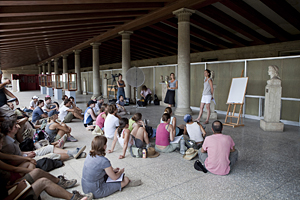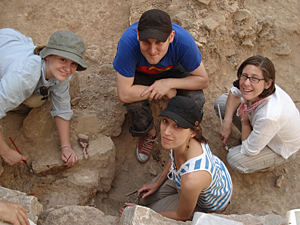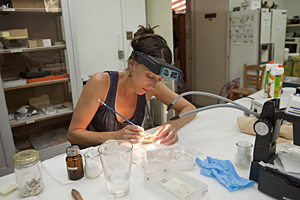

ADVERTISEMENT
- UD grad students help preserve cultural heritage across U.S., around globe
- LeeAnn Barnes Gordon: Agora Excavations, Athens, Greece
- Lauren Bradley: Walters Art Museum, Baltimore
- Alisha Chipman: Paul Messier, LLC
- Rose Daly: Nasher Sculpture Center, Dallas
- Emily MacDonald-Korth and Carlos Moya: Fengguo Temple, Yixian, China
- Amanda Maloney: C.C. von Waldthausen Fotorestauratie Atelier, Amsterdam
- Gwen Manthey: Western Center for the Conservation of Fine Arts, Denver
- Carrie Roberts: English Heritage, London
- Kirsten Travers: Stichting Restauratie Atelier Limburg, the Netherlands
- Renee Wolcott: Smithsonian National Portrait Gallery
- Erin A. Anderson: Poggio Colla, Mugello Valley of Tuscany
- Tatiana Cole: Metropolitan Museum of Art
- Anne Getts: Philadelphia Museum of Art
- Sarah Gowen and Stephanie Oman: Shangri La, Honolulu, Hawaii
- Allison Holcomb: Colonial Williamsburg, Williamsburg, Va.
- Ellen Moody: Sherman Fairchild Center, Metropolitan Museum of Art
- Steve O'Banion: Smithsonian American Art Museum, Lunder Conservation Center
- Ellen Promise: Philadelphia Museum of Art
11:04 a.m., July 28, 2010----This summer, I joined the American School of Classical Studies conservation team at the Athenian Agora Excavations. This archaeological site is best known as the marketplace of Classical Athens, the foremost city-state in Greece during the 5th and 4th centuries B.C.
Situated directly below the Acropolis, the Agora was filled with monuments and public buildings such as covered porticos and law courts. It was the focal point of civic life in Athens and was frequented by the likes of Perikles, Socrates, Plato, Thucydides, and Praxiteles.
On my walk to work each morning, I follow the course of the ancient Panathenaic Way, the great processional road. I stop at the reconstructed Stoa of Attalos, which houses the conservation lab, and thus it is impossible to escape the monumental feeling of the ancient past.
I am thrilled to be able to work on freshly excavated materials from the Agora, which have included an ancient glass bead, copper alloy coins, painted wall plaster, and fragments of ostraka, i.e., inscribed pottery sherds used as voting tokens in antiquity.
Archaeological conservation at the Agora is primarily concerned with the stabilization and preservation of, as well as the maintenance of scholarly access to the collection. My internship coincides with the summer excavation season, and I am one of four interns from conservation training programs in North America and Europe.
Conservation supervisors Amandina Anastassiades and Karen Lovén encourage discussion about each new material type that is encountered during the season. Therefore, one of the strengths of this internship is that everyone has a chance to share their experiences and methods. Outreach is becoming an increasingly important role of conservation at the Agora.
This year, the first-ever series of conservation workshops are being held for the excavation staff. Along with the other interns, I helped to organize and structure the first two sessions, which were hugely popular and well attended.
One of my favorite objects to work on this season has been a fragment of a painted terracotta figurine. On the front of the fragment was a sculpted relief of swirled locks of hair covered with a thick layer of white pigment. The reverse, where the wet clay would have been pressed into a mold, was covered with fingerprints of the artisan who made the figurine. The paint on the fragment was very powdery and deteriorated, so I worked slowly under a microscope in order to disturb as little of the original pigment as possible while I reduced the burial soil from the surface.
In addition to labwork, I have had the opportunity to work with objects in the field. At the Agora Excavations, the conservators are part of the excavation team and are called to the site when fragile finds and unidentified materials are discovered. During the second week of the project, I assisted in the stabilization, excavation and lifting of an iron-alloy object. In the upcoming weeks, I look forward to returning to the field to complete the stabilization and transport of a large pithos, or storage vessel.



